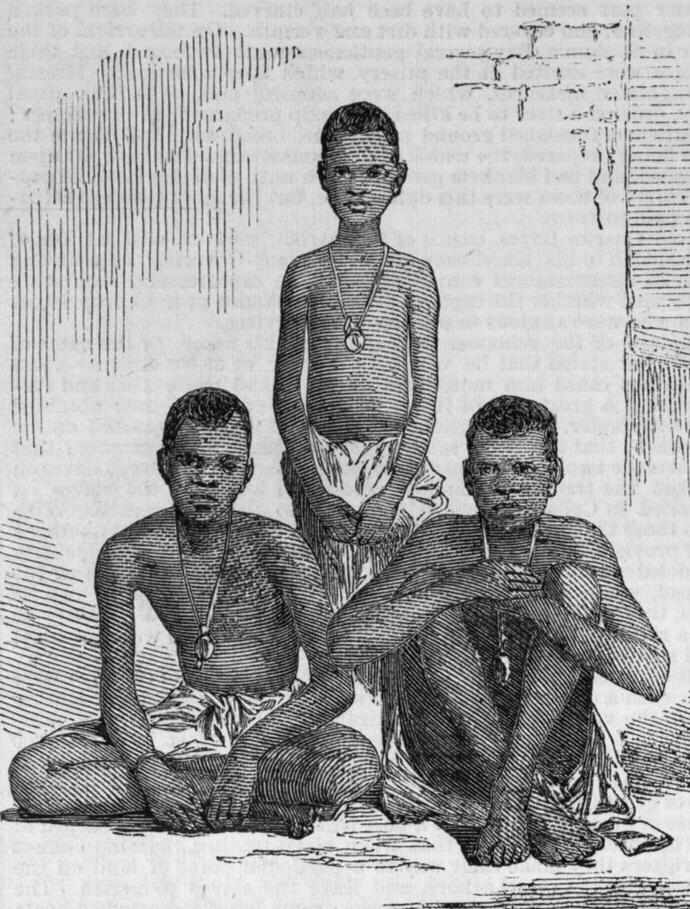
Figure 1.--This engraving was captioned, "Slaves at Fort Augusta". We see a group of liberated Africans. Notice the amulets around their necks. I doubt id these came from Africa. The Royal Navy captured the slaver 'Zeldina' which was blown off course near the Cuban coast. The images are dated Kingston, Jamaica, May 11, 1857. An accompanying letter includes excerpts from Jamaican newspapers. The engravings shown here were made from photographs sent by the writer to the 'Illustrated London News'. They explain how in April 1857 a Royal Navy ship captured the 'Zelinda' and brought it into Port Royal. The slavers had boarded 500 Africans at Cabinda, Angola--a Portuguese colony. When the Royal Navy seized the vessel, 46 days later there were 370 survivors. One of the Kingston newspapers reported, "The poor captives were in a wretched condition--all of them naked; and the greater part seemed to have been half starved. They were packed closely together, and covered with dirt and vermin . . . . The slave-schooner had two decks and between them the captives were packed in such a manner that they had scarcely room to move. During each day of the voyage they sat in a painful posture, 18 inches only being allowed for each to turn in . . . in a deck room of 30 feet in length . . . [they were] brought up in platoons once every day to get a small portion of fresh air . . " Source: London Illustrated News' (June 20, 1857), vol. 30, p. 595-96. |

